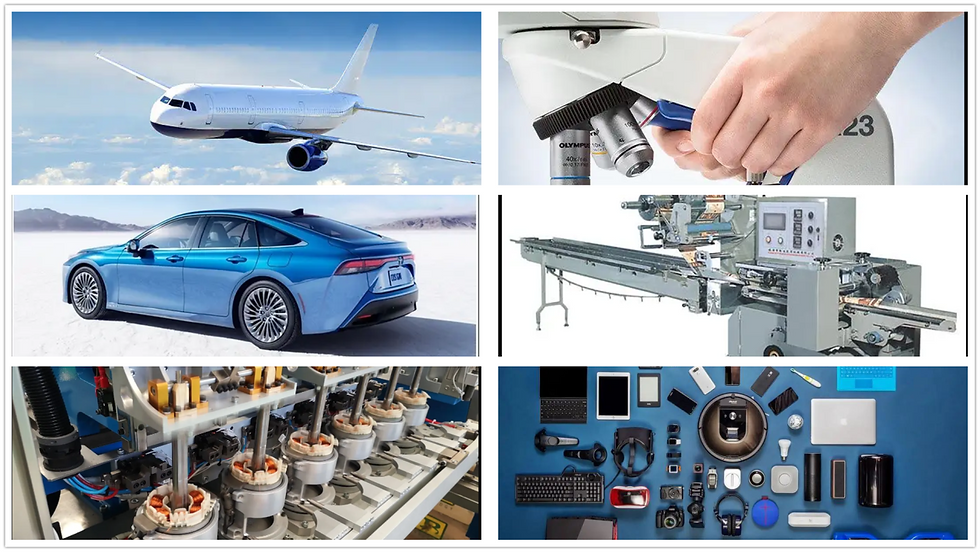Laser Tube Cutting: The Ultimate Guide to Precision Tubular Fabrication
- shiva ganesh
- Jul 25
- 4 min read
Table of Content
Introduction to Laser Tube Cutting
What is Laser Tube Cutting?

Laser Tube Cutting is a specialized laser cutting process designed specifically for tubes, pipes, and profiles made from metals like steel, stainless steel, and aluminum. This method uses high-powered lasers (usually fiber lasers) combined with rotating and linear CNC-controlled movements to cut complex shapes, holes, slots, and profiles along the tube’s length and circumference.
Laser tube cutting is widely used in automotive, aerospace, architecture, furniture, medical devices, and construction industries for precision, speed, and repeatability in producing structural or decorative tube components.
A Brief History of Laser Tube Cutting
The technology evolved from sheet metal laser cutting in the 1980s and became mainstream by the 1990s, thanks to advancements in rotational CNC axis control and fiber laser power. Today, laser tube cutting offers unmatched efficiency and accuracy for modern fabrication.
How Laser Tube Cutting Works
The Basic Workflow

Design the part using CAD software (specific to tubular geometries).
Generate the cutting path using CAM software, considering the tube's rotation and position.
Load the tube into the machine’s chuck and supports.
Clamp and rotate the tube precisely as the laser follows the programmed path.
Execute cuts for holes, slots, miters, and contours.
Inspect for dimensional accuracy and surface quality.
Key Components of a Laser Tube Cutting Machine

Fiber Laser Source
Generates the high-energy beam to cut through metals.
Cutting Head
Focuses the laser for precise cuts; often equipped with auto-focus features.
Tube Chuck System
Rotates and clamps the tube securely during cutting.
Support Systems
Maintain alignment and prevent sagging of long tubes.
CNC Controller
Coordinates all linear and rotational axes for complex geometries.
Laser Tube Cutting Processes

Straight Cuts
Clean, perpendicular cuts at specified lengths.
Angle/Mitre Cuts
Accurate angular cuts for welding or assembly.
Slots and Holes
Intricate shapes for mechanical or aesthetic purposes.
Contour Profiling
Complex patterns around the tube’s surface.
Perforation Patterns
Series of holes for lightweight structures or ventilation.
Materials Used in Laser Tube Cutting

Common Materials
Metals
Mild Steel
Stainless Steel
Aluminum
Brass
Copper
Titanium
Profile Shapes
Round Tubes
Square Tubes
Rectangular Tubes
Oval Tubes
Custom Profiles (L, U, H shapes)
Applications of Laser Tube Cutting

Automotive
Chassis structures, roll cages, exhaust systems, seat frames.
Aerospace
Lightweight structural elements, engine components.
Furniture
Modern steel or aluminum designs requiring precision joints.
Construction
Architectural frameworks, railings, curtain wall structures.
Medical Devices
Frames, supports, and ergonomic components.
Sports Equipment
Bicycle frames, gym equipment.
Advantages of Laser Tube Cutting

Precision and Clean Cuts
Tight tolerances with clean, burr-free edges.
Flexibility for Complex Designs
Can create slots, holes, contours, and miters in one setup.
Reduced Secondary Processing
Minimal need for deburring or finishing.
Faster Production
Automated systems increase throughput compared to manual methods.
Cost Efficiency
Reduces assembly time, welding, and fixtures thanks to precise cuts and fitments.
Limitations of Laser Tube Cutting

Material Thickness
Effective typically up to 10mm wall thickness depending on material and laser power.
Machine Investment
Higher upfront costs for specialized tube laser machines.
Reflective Materials
Challenges with highly reflective metals like brass or copper, requiring specialized fiber lasers.
Cutting Speed on Thick Tubes
Slower on thick-walled materials.
Laser Tube Cutting vs. Traditional Tube Cutting Methods
Key Differences
Feature | Laser Tube Cutting | Saw Cutting | Plasma Cutting | Manual Methods |
Precision | Very High (±0.1mm) | Moderate | Lower | Lower |
Edge Quality | Excellent | Requires finishing | Poor | Poor |
Geometry | Complex 3D profiles | Straight cuts only | Basic cuts | Basic cuts |
Speed | Fast (automated) | Moderate | Fast | Slow |
Cost | Higher initial | Lower initial | Moderate | Low |
When to Choose Laser Tube Cutting
For precision-fit components with complex profiles.
When accuracy, repeatability, and automation are priorities.
Ideal for prototyping through mass production.
Future Trends in Laser Tube Cutting
Integration with Automation
Automated loading, unloading, and sorting systems.
Higher-Power Fiber Lasers
Faster cutting of thicker walls and harder metals.
Smart Software
AI-driven nesting and cutting optimization to minimize waste.
Hybrid Machines
Combining tube cutting, bending, and welding in one setup.
Cost Considerations
Machine Cost
Entry-level: ₹1 crore – ₹2 crores
Industrial advanced: ₹2 crores – ₹5 crores+
Operational Costs
Energy for lasers and auxiliary equipment.
Assist gases (oxygen, nitrogen, air).
Maintenance of optics and chucks.
Part Cost
Lower in high-volume runs due to automation and speed.
Choosing the Right Laser Tube Cutting System
Based on Material
Ensure laser power matches material type and thickness (e.g., fiber lasers for metals).
Based on Application
Consider chuck size, rotation capabilities, and software flexibility for complex designs.
Volume Consideration
Best suited for medium to high production volumes with consistent tube profiles.
Tips for Getting Started with Laser Tube Cutting
Design for Laser Cutting
Incorporate tab and slot joints, self-locating features to ease assembly.
Select the Right Machine
Match machine specs to tube size range and complexity.
Optimize Material Usage
Efficient nesting reduces scrap and costs.
Invest in Training
Skilled operators maximize machine efficiency and quality output.
Conclusion
Laser Tube Cutting revolutionizes tubular fabrication, offering unmatched precision, flexibility, and efficiency. Whether for intricate architectural designs, lightweight aerospace structures, or robust automotive components, this technology enables faster production, lower costs, and superior quality.





Comments